Raised vs. In-Ground Garden Beds: Benefits & Drawbacks
-
Pete Ortiz
- Last updated:
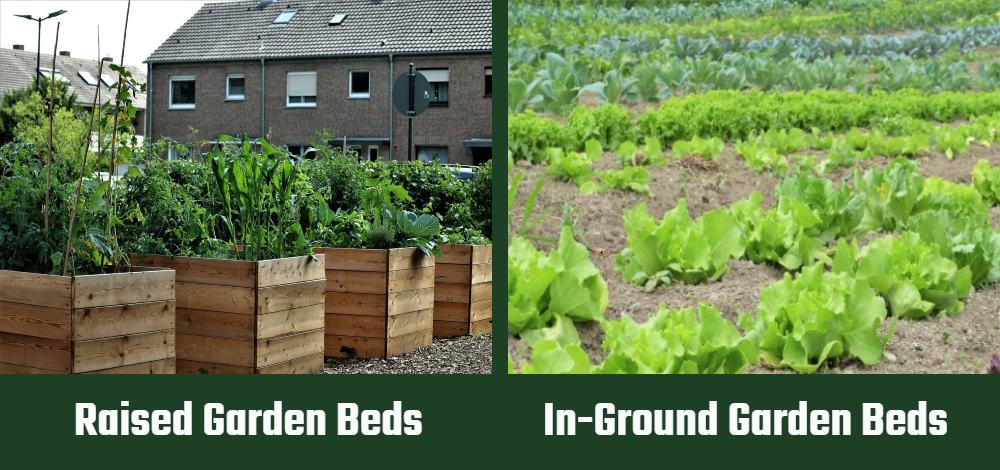
There are two primary ways to start a garden at home. There are raised garden beds, and there are in-ground garden beds. If you are planning on planting anything, you will eventually come across this choice. Some people prefer elaborate raised garden beds, while other people prefer simple in-ground mounds. But which is better?
This comprehensive overview will go over the differences between raised garden beds and in-ground garden beds with a focus on the pros and cons of each. Both of these planting styles have a lot of benefits, but they also come with a set of unique drawbacks as well. By the end, you will know exactly what type of garden bed will work best for you and your own personal garden.
Overview of Raised Garden Beds
Raised garden beds are a classic staple of American life. They can be found on farms, in yards, under windows, and in communal spaces. Raised garden beds are also known as planter boxes, flower boxes, or raised planters. The basis of a raised garden bed is a box that contains soils and plants for tending. Raised garden beds get their name because the boxes are built and set on the ground, so the soil is elevated above the natural ground. This provides a myriad of benefits that extend from appearance to science.
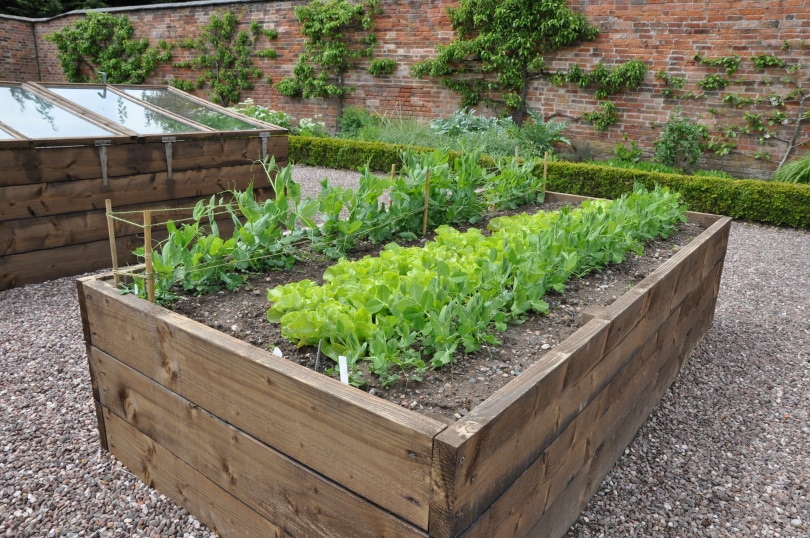
Benefits Of Raised Garden Beds
Raised garden beds have numerous benefits that come with them. These benefits are some of the reasons why raised garden beds are so popular. Raised garden beds are very versatile, customizable and offer some great advantages for the healthy growth of plants.
Raised garden beds are extremely customizable. They can be built to nearly any specification, size, or style. This is great because garden beds can then be tailored to each individual gardener. The height can be adjusted for the perfect fit, so you do not end up with back or knee pain. The type of wood can be chosen specifically to match the exterior of your home, so the garden blends flawlessly with your overall look. The size can be changed to fit any garden. Whether you want a simple square flower box or an expansive vegetable garden, you can build a raised bed to accommodate both.
Raised garden beds are not just versatile. They are also good for the plants themselves. The raised garden beds offer a level of protection against weeds and soil-borne parasites. Keeping the plants above the fray protects them from common pests that are prevalent on the ground. Raised garden beds also give advanced gardeners more control over the soil composition, soil pH values, and level of compression and drainage. All of this can help tailor the bed to benefit your favorite types of plants.
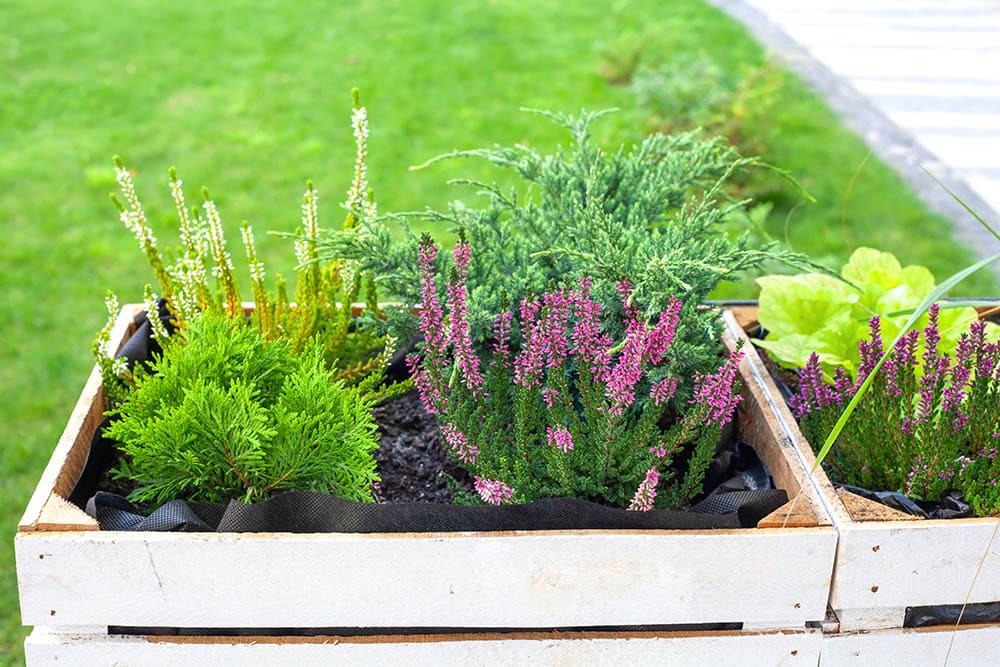
Drawbacks of Raised Garden Beds
There are two main drawbacks when it comes to raised garden beds. The first is that raised garden beds are expensive compared to in-ground beds. Raised garden beds require a lot of materials to build as well as time and experience. You can find prefabricated kits, but they usually come with a hefty price tag. Or you can buy the materials yourself and put together your own beds, but that requires tools, knowledge, and finesse that not everyone possesses. For comparison, an in-ground bed just needs a till and a shovel to create.
The other drawback is that raised garden beds are heavy and more permanent than in-ground beds. If you want to get rid of an in-ground garden, it is as simple as ignoring it and then turning it over with a shovel during the winter. Raised beds are harder to deconstruct and can become an eyesore if they are not tended to regularly. They are also hard to move since they are very heavy when full of soil.
All in all, the benefits of raised garden beds generally outweigh the drawbacks, but the circumstances are different for everyone.
- Can be built in any size or style
- Visually appealing compared to in-ground
- Offers a lot of control over the soil
- Protects plants from parasites, poor natural soil, and weeds
- Expensive to buy or build
- Hard to move or get rid of
Overview of In-Ground Garden Beds
In-ground garden beds are simple and natural. These beds are dug out of existing soil. All it takes to create an in-ground garden bed is a shovel, a till, and some gloves. You simply need to weed a patch of soil in your yard, turn over the dirt and start planting. In-ground garden beds are older and simpler than raised garden beds and they come with their own benefits.
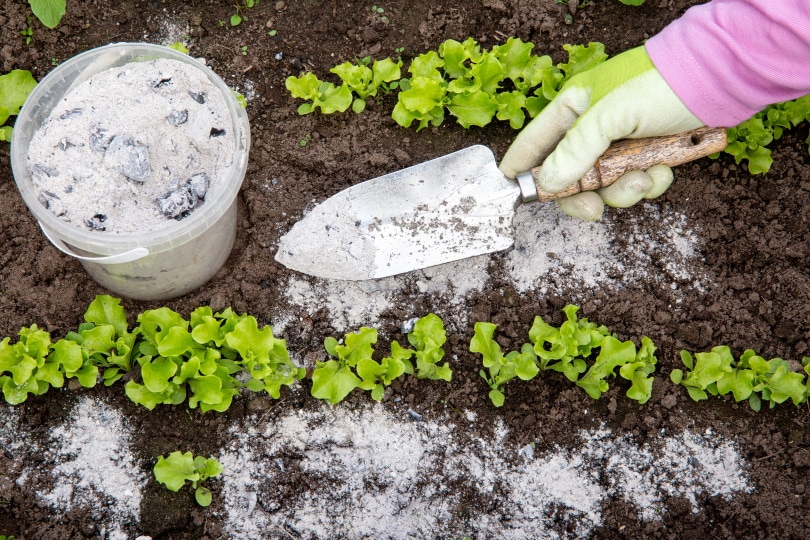
Benefits Of In-Ground Garden Beds
The greatest benefit to in-ground garden beds is the fact that they are extremely economical. You do not need to buy many things in order to get your garden up and running. Unlike raised beds, you do not need any expensive materials. The determined person could create an in-ground garden bed entirely by hand without any tools if they were so inclined.
In-ground garden beds are also more natural. If you are trying to grow local plants, using local soil can add authenticity and create a better environment than a raised bed. In-ground beds are also free of any potentially harmful materials. Plastic, wood, and treated material used in raised beds can potentially add unwanted compounds to your soil. In-ground beds do not have that potential for contamination.
Lastly, in-ground garden beds use less water than raised beds, and they are easier to irrigate. The ground itself holds more water than raised beds and therefore dries out more slowly. In-ground beds are also easy to water and irrigate. Raised beds often require a complicated irrigation system or drainage system to ensure that the boxes stay wet without rotting or drying out too quickly. The in-ground beds are easier to manage in this regard than raised beds.
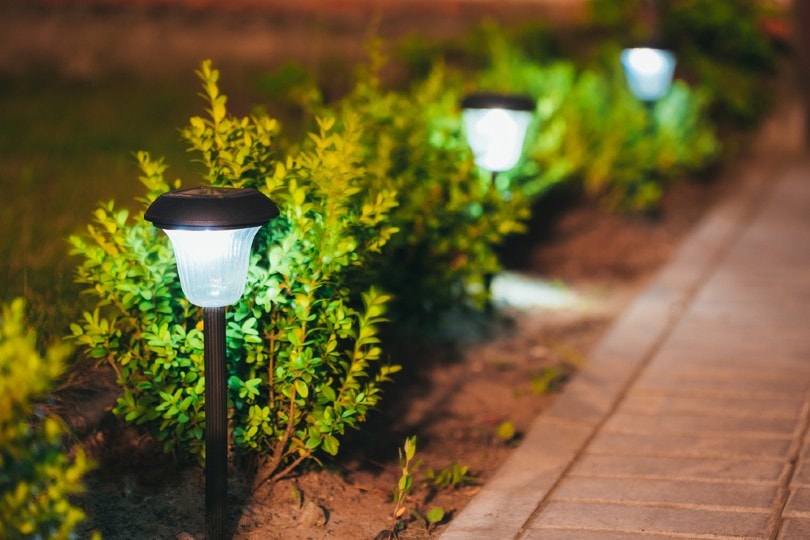
Drawbacks of In-Ground Garden Beds
Despite the various benefits of in-ground garden beds, there are also some drawbacks. First, in-grounds are susceptible to the whims of the natural soil. If you have poor soil, you are going to have poor garden beds. The natural soil can also contain harmful pathogens that can damage plants. Being on the ground also makes the in-ground beds easier to penetrate by invasive weeds and bugs.
In-ground beds are also less visually appealing than raised beds. In-ground beds often look like mounds of dirt with some plants compared to intricate and carefully designed raised beds. Some people do not like the simple look of an in-ground garden bed.
Lastly, finding a good spot for an in-ground garden bed can be trickier than finding a place for a raised bed. An in-ground garden bed requires ample sunlight, good soil, proximity to a water source, and room to work with. Not everyone has a place in their yard where all of these factors coalesce to allow for the healthy growth of plants. In comparison, a raised garden bed can be built almost anywhere, including on concrete which allows you to set up your garden exactly how you want it. In-ground beds are more constrained by the environment, which can be a hassle.
- More natural
- Extremely affordable and easy to start
- Uses less water and is easier to irrigate
- More vulnerable to pests and weeds
- Less aesthetic than raised beds
- Finding a good spot can be difficult
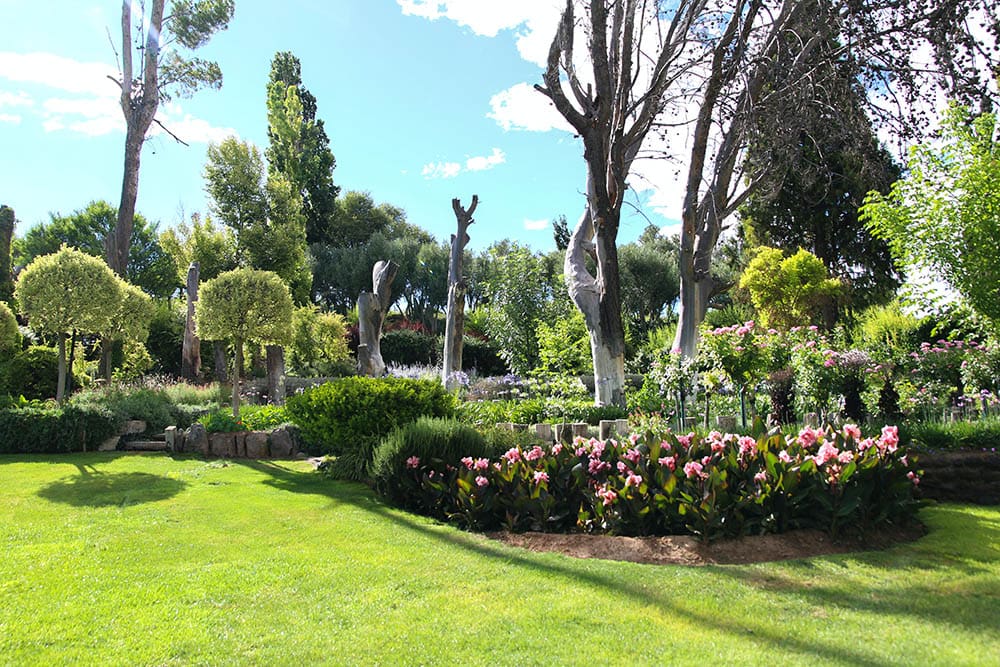
When to Choose a Raised Garden Bed vs. an In-Ground Garden Bed
So, which should you choose? The choice is ultimately up to you. One of the biggest factors that will play into the final decision is what kind of space you are working with. If you have a large open yard with good soil, plenty of sunlight, and nearby water, you might want to try an in-ground bed because they are easy to set up with little upfront costs.
However, if you have a small yard with rocky soil or concrete slabs, you might want to try building a raised bed. They cost more, but the payoff can be great. Raised beds offer more granular control over your soil and plants, but they require more attention, water, and money to upkeep. In-ground beds are cheap, easy to move, easy to remove, and are more natural, but they are vulnerable to bugs, weeds, and other hindrances.
In the end, the choice between a raised garden bed and an in-ground garden bed will be determined by three factors, budget, space, and goals. If you have a lot of space but little money, you will choose an in-ground bed. If you have limited space and a large budget, you might go with a raised bed. It also depends on what your final goal for the project is. Is this an experimental garden? Do you want a garden to last you years? Are you doing it for stylistic purposes? The answers to these types of questions will also help guide your choice.
Conclusion
Both raised garden beds and in-ground beds have a lot of benefits. Each can be tailored for specific types of plants, gardens, and yards. Plants will thrive in either if the conditions are right. The choice between a raised garden bed and an in-ground bed will likely come down to space constraints and budget. Overall, there are more benefits to a raised garden bed for most people, but in-ground beds also have a place as well.
You Might Also Be Interested In:
Featured Image Credit: (L) Caniceus, Pixabay | (R) silviarita, Pixabay
Contents



